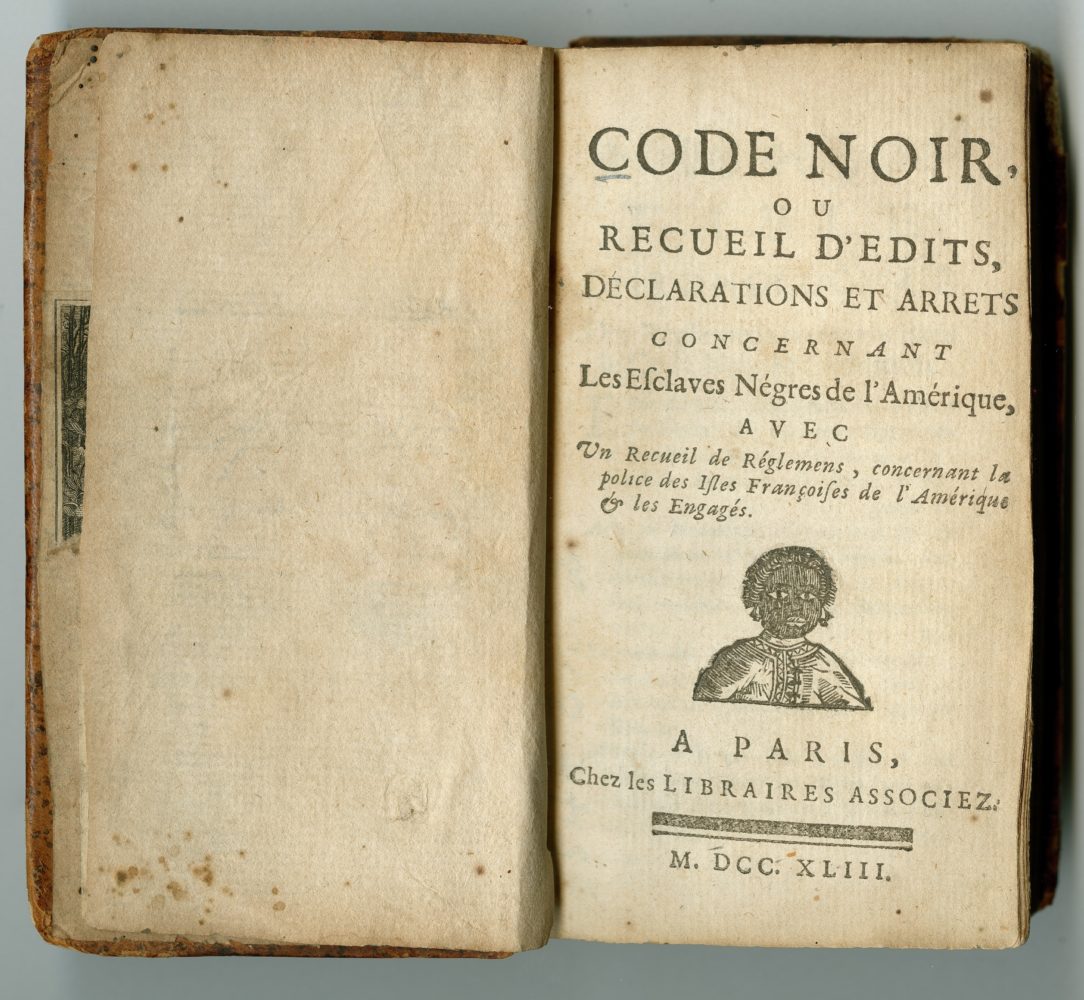African Slavery in French Colonial Louisiana
Enslaved Africans and people of African descent played key roles in nearly every aspect of the development of Louisiana.
This entry is 6th Grade level View Full Entry

The Historic New Orleans Collection
Code Noir of 1724. Paris: les Librairies Associez, 1743.
Enslaved Africans first arrived in French colonial Louisiana from the Caribbean in 1706. The first ship carrying enslaved people from Africa arrived in 1719. During the French colonial period, approximately six thousand Africans endured the Middle Passage before arriving in Louisiana. During this time other enslaved Africans and Afro-Creole people were sold to the colony from places like South Carolina, Jamaica, and other Caribbean islands. They were brought here by force, not by choice. Enslaved Africans and people of African descent played key roles in nearly every aspect of Louisiana’s development.
How did African slavery contribute to the development of French colonial Louisiana?
Louisiana’s colonial founders saw slavery as a key part of developing Louisiana. As early as 1699, when Pierre Le Moyne d’Iberville first began to develop the French colony of Louisiana, he asked King Louis XIV to let him bring in enslaved people from Africa’s west coast. In Louisiana’s early years, enslaved Africans were brought to the colony in small numbers through trade with islands in the Caribbean. The first ship carrying enslaved people didn’t arrive until 1719. This ship brought 200 men, women, and children across the Atlantic Ocean. When they arrived, they were sold to enslavers in Louisiana. Between 1719 and 1731, ships brought more than six thousand Africans to the colony. Most of these enslaved people came from West Africa, specifically from areas known as Senegambia and the Bight of Benin. By the 1730s there were more enslaved Africans and people of African descent living in Louisiana than there were people of European descent.
Enslaved young people and adults living in Louisiana worked hard. They cleared land for settlements, farms, and plantations. They grew food and cash crops like tobacco and indigo. They dug canals and built levees. They worked as sailors, soldiers, nurses, cooks, carpenters, and much more, filling almost every work role that existed in eighteenth-century Louisiana.
They also brought their cultures, skills, and languages from Africa. Africans from different cultures often lived and worked side by side in colonial Louisiana. They formed families and brought up new generations of children living under slavery. This cultural mixing, along with the mixing of Indigenous practices and French cultural elements like Catholicism, helped form a distinct Afro-Creole identity.
What rules and laws regulated the practice of slavery during the French colonial era?
During the French colonial era, the Code Noir regulated the practice of African slavery. It also regulated interactions and relationships between enslaved people and free people, including free people of color. The Code Noir’s rules said that enslaved people were property and could be bought and sold. The rules said that when an enslaved woman had a child, that child was also enslaved. The Code insisted that all enslaved people be baptized as Catholic. It also made it very difficult for enslaved people to gain their freedom. Enslaved people weren’t allowed to own anything. Everything they grew, created, or earned was legally owned by their enslavers. Enslavers could only free someone with the permission of the colony’s Superior Council.
The Code Noir also instructed colonists on many things enslaved people weren’t allowed to do, and it included specific punishments for people who broke the rules. Enslaved people weren’t allowed to carry weapons or gather in groups with people owned by other enslavers. They weren’t allowed to marry white people or own property. They weren’t allowed to defend themselves in court. Punishments outlined in the Code Noir were severe. Whipping and branding were common. Enslaved people who repeatedly broke the Code Noir’s rules faced punishments that were more and more serious, including death.
How did enslaved people rebel against slavery?
Enslaved people fought back against slavery in big and small ways. Some broke tools or slowed down the pace of work on purpose. Some took extra food to feed their families or themselves. Another way to rebel was to keep African spiritual and cultural beliefs alive. The Code Noir required that all enslaved Africans be baptized as Catholic, but this didn’t mean that enslaved people threw away their own belief systems. Catholic baptisms also required that enslaved people be renamed with the names of Catholic saints. Even something as simple as using your African name could be seen as rebelling against slavery.
Sometimes an enslaved person or group of enslaved people ran away. A person might run away for just a day to escape work or a punishment temporarily, or someone might run away hoping to escape slavery altogether. People who ran away often hid in the woods, especially in Louisiana’s swamps. Sometimes enslaved Africans and enslaved Indigenous people ran away together, taking shelter with Native American tribes.
